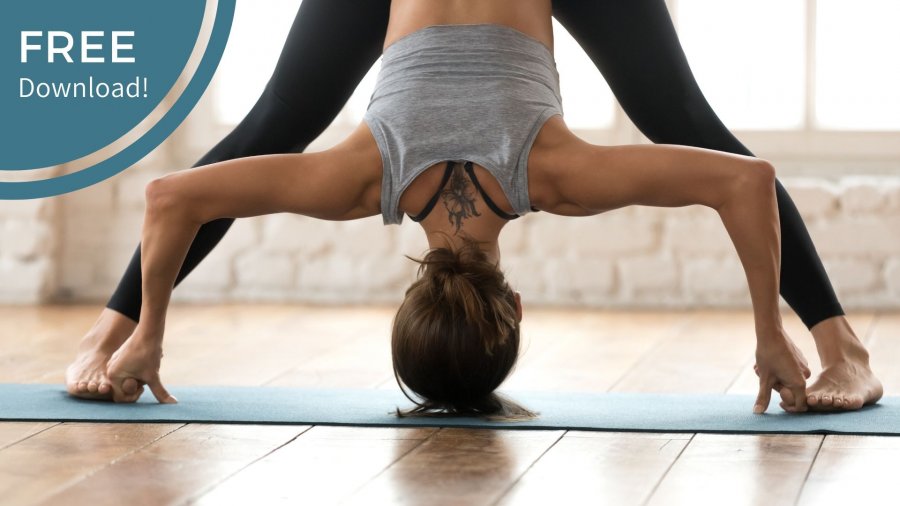Free Download! Yoga for Every Body: How to Avoid the Top 3 Pitfalls of Forward Bends
Course Info
- Price:
- $0.00
Julie Gudmestad
 Julie Gudmestad, PT, C-IAYT has been active in Portland, Oregon, as a yoga teacher and licensed physical therapist for over 40 years. She has integrated her western medical knowledge with yoga training into a unique teaching style, and regularly teaches anatomy and asana workshops throughout...
Julie Gudmestad, PT, C-IAYT has been active in Portland, Oregon, as a yoga teacher and licensed physical therapist for over 40 years. She has integrated her western medical knowledge with yoga training into a unique teaching style, and regularly teaches anatomy and asana workshops throughout... 
Are you a forward bend junkie? Forward bends are a group of yoga poses that most people either love or hate.
If you are a forward bend aficionado, you likely love forward folding yoga poses for their soothing and calming effects. At the end of a long, demanding day, nothing settles body and mind like a good dose of Standing Widelegged Forward Bend or Reclining Hand to Toe pose.
On the other hand, if you’re among the people who just can’t find a way to be comfortable in forward bends - no matter how much you bend your knees - you’ve caught on to one important fact: Forward bending poses are not universally beneficial for every body.
In fact, there are 3 main pitfalls of forward bends and most yoga students - and their teachers - ignore them, says Iyengar yoga teacher Julie Gudmestad, P.T. in this free download.
Not all forward bending poses are appropriate for all bodies. We are all unique in our level of physical activity, level of body awareness, and the underlying disposition of our bodies toward tightness and weakness in crucial areas.
Julie discusses the top 3 pitfalls of forward bends, which we ignore at our own risk:
Pitfalls of Forward Bends #1: Ignoring the Law of Compensation
It’s critical to understand the mechanics of how compensations arise in our practice, Julie notes. Compensations arise when one area gets overloaded and another area of the body has to work harder to compensate. This in turn sets the stage for making us much first of all, uncomfortable in our practice and secondly, much more vulnerable to long-term injury.
Pitfalls of Forward Bends #2: Ignoring the Biomechanics of Different Forward Bends
The biomechanics of different forward bends differ, and with that, the demands they put on different parts of the body differs as well. If we ignore this, we can’t prepare properly for forward bends, and it becomes harder to do the pose without triggering compensation and discomfort.
Pitfalls of Forward Bends #3: Setting Yourself Up for Back Pain Issues and Long-term Injuries
Ignoring pitfall #1 and pitfall #2 and practicing without reference to the unique needs of our body, can in the long run lead to problems like low back pain, SI joint disfunction, and in the more severe cases, serious injury to the intervertebral discs of the low back.
This is particularly the case for people with tight hamstrings. When the hamstrings are tight, the adductors and deep hip rotators are usually tight as well. This starts a domino effect where the pelvis gets locked into position and most of the forward bending puts stress and strain on the low back.
So how should we practice?
“There are lots of options to make friends with yoga forward bends no matter what your body type,” notes Julie. “With intelligent and mindful choices, there’s no reason a forward bending practice can’t be a part of everyone’s practice.”
“People who've had low back pain and low back problems can go back to a forward fold practice, but they just have to do it in a smart way,” says Julie. “It’s essential to learn the right steps to work with the unique features of each person’s body.”
You may also enjoy Julie's course, Anatomy-Based Yoga Teaching Methodology: Principles for Safe Forward Bending.